small rock I believe is a meteor that came from space it sticks to a magnet shiny and looks like crushed burn black. Thank you all for your help I love this site so far the few posts that I have posted were really helpful thanks again









Navigation
Install the app
How to install the app on iOS
Follow along with the video below to see how to install our site as a web app on your home screen.
Note: This feature may not be available in some browsers.
More options
You are using an out of date browser. It may not display this or other websites correctly.
You should upgrade or use an alternative browser.
You should upgrade or use an alternative browser.
🔎 UNIDENTIFIED I think this a space rock
- Thread starter Donvic
- Start date
Kray Gelder
Gold Member
- Feb 24, 2017
- 7,005
- 12,554
- Detector(s) used
- Fisher F75
- Primary Interest:
- Metal Detecting
Not a meteorite, IMO. Maybe a tektite? Search images of those. They look like your example.
Upvote
2
Red-Coat
Gold Member
Sorry, but it's neither a meteorite nor a tektite. The surface appearance and the clasts that I can see are not characteristic of a meteorite. You haven't said where you found this, but tektites are impact-related to the extent that they are only found in certain parts of the world. They're essentially a form of glass arising from very large impacts, are usually very homogeneous, and never attracted to a magnet.
Upvote
4
- Thread starter
- #4
Ca .Sorry, but it's neither a meteorite nor a tektite. The surface appearance and the clasts that I can see are not characteristic of a meteorite. You haven't said where you found this, but tektites are impact-related to the extent that they are only found in certain parts of the world. They're essentially a form of glass arising from very large impacts, are usually very homogeneous, and never attracted to a magnet.
Upvote
0
tamrock
Gold Member
- Jan 16, 2013
- 15,449
- 31,354
- Detector(s) used
- Bounty Hunter Tracker IV
- Primary Interest:
- All Treasure Hunting
A verity of Breccia possibly.
https://en.m.wikipedia.org/wiki/Breccia Really! it's magnetic.
https://en.m.wikipedia.org/wiki/Breccia Really! it's magnetic.
Upvote
1
UnderMiner
Silver Member
- Jul 27, 2014
- 3,818
- 9,726
- 🥇 Banner finds
- 2
- Detector(s) used
- Minelab Excalibur II, Ace 250
- Primary Interest:
- All Treasure Hunting
Looks like aliens made that one. Neat!What about this rock anyone?
Upvote
2
Red-Coat
Gold Member
These two don’t look the same look at the texture on these rocks I believe the first rock is tektite and it doesn’t Stick to a magnet and Second one is ? But sticks to a magnet
There are no tektites (or meteorites) in any of your pictures. These are the main tektite strewn fields arising from impacts large enough to have created them. There may be a few outliers beyond these areas but either rare or as small micro-spherules.
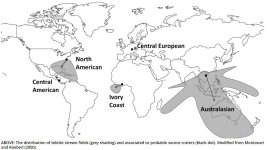
Tektites are a very pure form of natural glass formed at extremely high temperatures. The surface appearance is consequently obviously vesicular (rounded bubbles from expansion of gases or water vapour which may be elongated ovals). They may also exhibit flow lines or other melt features and/or aerodynamic sculpted shapes from travel through the atmosphere in a molten state and occasionally stratified. None of those features are apparent from your pictures.
A few examples (from my collection) which show typical appearances:
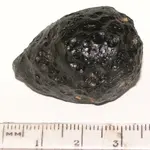
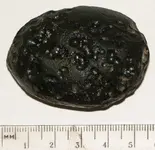
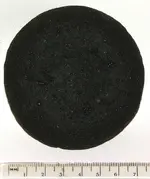
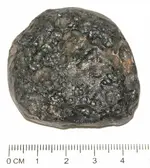
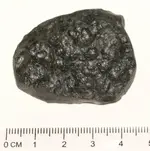
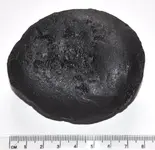
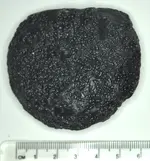
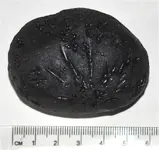
Upvote
2
I didn't see the other post, but Thank You for the info.I replied on your other thread that this is a Japanese 'ren' character, commonly seen on ornamental stones in Japanese gardens.
Upvote
0
- Thread starter
- #13
I know for sure this not ! a tetktites, I just here to Learn and read I do not admit to any of these being meteors, comment or whatever I just ask a question but I really appreciate all your help even the jokestersThere are no tektites (or meteorites) in any of your pictures. These are the main tektite strewn fields arising from impacts large enough to have created them. There may be a few outliers beyond these areas but either rare or as small micro-spherules.
View attachment 2049658
Tektites are a very pure form of natural glass formed at extremely high temperatures. The surface appearance is consequently obviously vesicular (rounded bubbles from expansion of gases or water vapour which may be elongated ovals). They may also exhibit flow lines or other melt features and/or aerodynamic sculpted shapes from travel through the atmosphere in a molten state and occasionally stratified. None of those features are apparent from your pictures.
A few examples (from my collection) which show typical appearances:
View attachment 2049659View attachment 2049660View attachment 2049661View attachment 2049662
View attachment 2049663View attachment 2049664View attachment 2049665View attachment 2049666
Upvote
0
NJearthman
Sr. Member
- Oct 31, 2020
- 354
- 605
- Detector(s) used
- AT PRO, EQUINOX 600
- Primary Interest:
- All Treasure Hunting
Looks like a tektite to me.
Upvote
1
Top Member Reactions
-
 3475
3475 -
 1973
1973 -
 1908
1908 -
 1157
1157 -
 1091
1091 -
 1009
1009 -
 889
889 -
 863
863 -
 860
860 -
 793
793 -
 756
756 -
 676
676 -
 659
659 -
 567
567 -
 508
508 -
 453
453 -
 447
447 -
 410
410 -
 400
400 -
E
398
Users who are viewing this thread
Total: 2 (members: 0, guests: 2)




